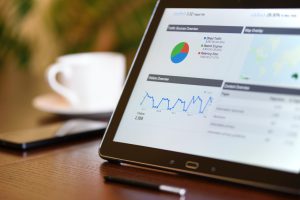The importance of data is derived from the insight it provides for the company. In other words, data has no inherent value, only its applications are considered as a tool for decision-making. Therefore, the real feature of a data-driven company isn’t simply collecting data, but rather utilizing data analytics tools to generate insight that can positively impact the decision-making process in management. It is in this analysis that value is derived from the data, either by diagnosing issues in various processes in the company or by providing performance reports for different endeavors. Through this knowledge, companies can understand the scope of their activities and make easier decisions when it comes to choosing between different campaigns. In addition to processing the final output of the company, applications of data in management can provide insight into various aspects of a business. As a simple example, data from various departments and machinery in an industrial business can be analyzed to identify weaknesses in each section, besides shedding light on what the leader of the company can do to improve their performance.
A data-driven company does not limit its utilization of data to leadership decisions, since the process can help various divisions in the company, such as human resources, for example. It can provide insight into individual performance, which can then be instrumental in deciding new roles for individuals within the company. They can also use data analysis for hiring more efficient workers. In essence, a data-driven company will implement data analytics and insight in all activities of the company, which provide an unprecedented boost in performance.
What is a data-driven process?
Data-driven means cultivating a series of data-based processes in a company, in addition to utilizing the tools necessary, to focus on the development of the data culture. What makes the difference in data-driven companies is their approach to data collection and data analysis based on their strategies and access methods. There are different styles of data analysis, each aimed at tackling specific data management challenges, which vary on degrees of maturity and inclusivity. Choosing the appropriate approach and data-driven process for your company will eventually determine the success of implementing data-driven strategies.
How do I make my company data-driven?
The most important step in developing a data-driven environment in your company is fostering a data culture that benefits the company in the long-term. Such an environment will be data-oriented, which calls for more collaboration and participation in the data generation process. In addition, a data-driven company should have the necessary technological infrastructure to support flawless data collection.
Choosing the right data analytics platform for your business
Your organization develops a data culture and the need for a unified data platform that can connect different roles in their data collection becomes apparent. This increased level of cooperation can create an effective harmony in your work environment. In other words, the data scientist can use a notebook environment to test and validate the model as it’s versioned and metadata is captured. The data scientist can then notify the DevOps team when the model is ready for production – and they can use the platform’s tools to continually monitor the model.
- Implementing up-to-date management policies
The path to becoming a data-driven company starts by governing the gathered data, guaranteeing their security and authenticity. Studies show that most companies will opt to implement extensive privacy rules and regulations instead of figuring out the issues in their data governance agenda to prevent privacy issues. Most companies ignore the need for evolution in their policymaking when it comes to data analytics. The use of outdated models in data-driven companies will decrease the efficiency of data collection, and in some cases could lead to misinterpretation of market trends.
Working with data requires tools, so gear up!
A data-driven company must guide all the departments to use data services and tools to speed up the analytic process, to avoid a cluster of unprocessed data that slows down the analytics team. There are certain smart tools designed with this point in mind, which will monitor the administrative models in effect, and provide other data-related services such as:
- Automation is a tool for developing business models using data from the implementation of previous models. In this process, a combination of machine learning and natural language processing is used to predict the effectiveness of a presented model.
- Reusability There are certain analytics models that can be used for multiple purposes in the data collection process. Some tools are designed to identify such potential overlaps that allow for a more efficient system of governance.
- Explanatory In a data-driven company, all employees must understand the basics of data science. However, not everyone is a data scientist, and so they have developed these tools to provide an easily observable presentation of the collected data and what they mean for the business.
Create a social network to encourage more collaboration between employees
One of the key aspects of running a successful data-driven company is clear communication between the different branches of your company. This improved collaboration will have advantages in both marketing and innovation but remains a challenge in most companies utilizing data. Implementing collaboration policies will help create a better understanding between various business and Information Technology apparatuses in a competitive environment.
To further advance teamwork in your company, you can use data insight to define their roles and how they are inter-connected.
Why is data-driven organization important?
Data-driven businesses benefit from the many advantages of data science implementation. They can be witnessed in various aspects, ranging from marketing and research development to decision making and governance. The following examples highlight only a few instances in a data-driven organization.
Improved Customer Service
Data-driven organizations can identify customer preferences and behavior. The data from a company’s customer support service can be analyzed to provide insight to other sections, where they can recognize customer patterns and issues.
Growth in Marketing and profit
A universal goal for all businesses is increasing profit. Data analysis is an ideal tool that can give you the edge in a saturated market. If you are experiencing declining revenue despite a steady supply, chances are you’re experiencing a marketing issue. Gathering sales and marketing data will allow the management to identify the source of poor performance and come up with strategies to get ahead of such issues.
Leading the market instead of following trends set by your competition
A data-driven company can race ahead of market trends using predictive models that assess the trajectory of the market. In other words, by feeding existing customer behavior and sales patterns, the analytics team can foresee new product possibilities.
Data-driven companies’ examples:
In a recent piece, Information Week revealed that nearly all of the Big Data collected worldwide has been gathered in the past two years, more than a quarter of the companies that collect data have no plans for interpretation and analysis of their accumulated datasets.
Big Data is a term used to describe volumes of data collected through different methods, and with varying degrees of structure.
To give you a general idea of how Big Data can be used to create a data-driven organization, the following Big Data approaches are good examples:
EBAY: in their latest marketing ploy, the company has introduced the feed, which gathers data to create advertisement algorithms that predict possible interests based on previous preferences. This new method of relevant purchase offers an interesting set of items to the customer based on what they have viewed or added to their shopping or wish list.
UBER: Uber is another example of data-driven companies that rely on Big Data analysis in setting out their agenda. By collecting data from passengers and drivers, and after the introduction of new services, other customers can match up better fares and calculate efficient routes that reduce both fuel consumption and time spent in traffic.
VIRAL: a video-sharing service with more than one hundred million users, this company provides content creators on YouTube with a platform to increase their engagement and their viewers and subscribers. It’s a relatively affordable service, and by means of thorough data analytics, informs its users on how their engagement has been affected by using the service.
BRITISH AIRWAYS: by introducing campaigns like “know me”, this airline company combines both data from online behavior and loyalty history information. Using this insight, they can offer personalized purchase scenarios and targeted advertisements.
The Verdict on Data-Driven Approach The importance of data has become highly apparent. Even when looking at it simply as a business model, it seems to be the next evolutionary advantage in human behavior. Adapting your business to this new data-driven future may be the only way forward in a post-pandemic marketplace that has become too saturated with the wave of personal entrepreneurship.



